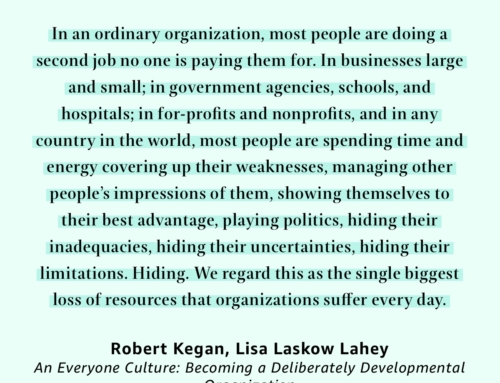LYSSA ADKINSJUNE 30, 2009
It doesn’t take long to see that the biggest blockers for agile teams have nothing to do with the team. They have everything to do with the surrounding organization. Things like the company’s rules, processes, procedures (aka red tape and bureaucratic run arounds). These are exactly the things that companies say they want agile teams to identify and remove so that they can become more competitive. Well, at least some of them say that. Others just want the benefits of agile and, once teams get going, get the shocker that to do agile well means changing at every level in the company. Yes, changing for the better, no doubt. Still, hard to face and harder yet to do. This came home to me again this weekend as I facilitated a Certified Scrum Master (CSM) course. I had just returned from a training class myself, where I learned about Innovation Games® from the inventor himself, Luke Hohmann of Enthiosys, Inc. Innovation Games® are nifty (and very powerful) ways to mine the collective intelligence of a group to solve hard problems, such as what to build in the next product or, in this case, how to face those nasty, entrenched impediments.
At the end of the first day, the group played Speed Boat (see the pictures of them at work). Students were asked to enumerate the anchors that will hold them back from using Scrum well in their projects, products, companies and even in themselves – the things that will keep them from going as fast as they could go. MANY things came up, most of which are existing corporate and personal limitations and have nothing to do with Scrum, per se, but will certainly hold people back from using Scrum well.
So, here we are, at the end of day 1 of the CSM class and we’re ending on a total downer. “How will we ever use Scrum well?” was the prevailing mood in the room (or, maybe, just in me as I worried on behalf of the students). No joke, though. It’s daunting when you see all of those bits of paper on the wall, each one representing another kind of wall (the brick wall) students will certainly encounter as they start to use Scrum well. And, most of the anchors on the Speed Boat are not the type of things one can put to rest in the confines of a training class. I was at loose ends. How would I ever “wrap this up” and leave students with the certainty that they really could do Scrum well?
The answer was already there in another Innovation Game®. I had already planned to do a game called Product Box on Day 2 and that was just what the doctor ordered! For this game, students were given cereal-sized boxes and lots of random materials and asked to create the product box that advertises their ideal healthy scrum team, project, product, organization or person – the kind they’d like to work on, work with or become. Then, they pretended they were in a trade show as they “sold” their product to one another. See amazing pictures of the students at work and the resulting product boxes, including the slogans on the boxes in each picture’s title.
The result? Students were able to figure out what’s important to them about Scrum and how that applies to the environments they work in. The act of creating and selling their ideal healthy Scrum “product” connected them emotionally to what Scrum can do for them and their companies. This helped them find the words and images that make Scrum done well tangible.
Perhaps now they will be able to find some of those words deep inside themselves when challenged by “That’s just the way we do it around here.” Perhaps now they will stand tall to face (and tear down) all those brick walls that become apparent as they use Scrum well.
Perhaps you will use these techniques to help your teams find the words and images that give rise to their courage and allow them to address the brick walls facing them right now. May it be so.





